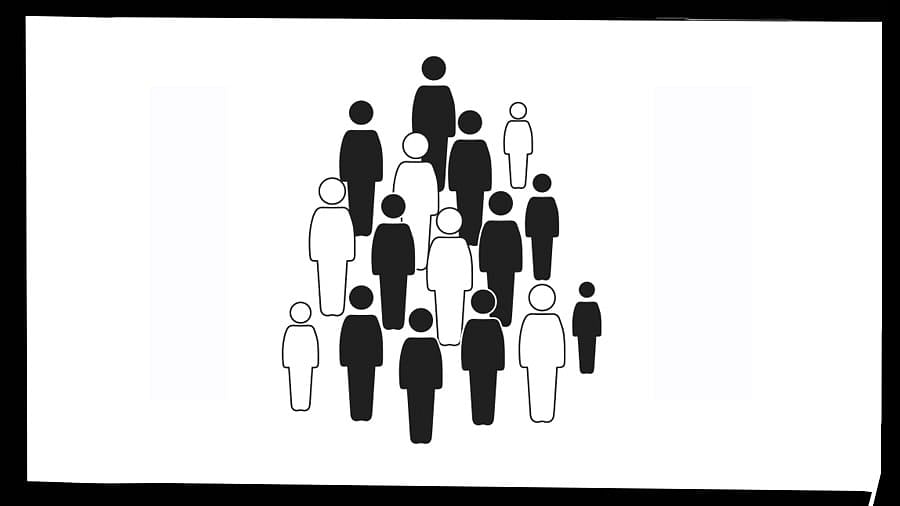
Credit: DH Illustration.
The dust around the debate of sub-classification of Scheduled Castes (SCs) and Scheduled Tribes (STs) does not seem to be settling anytime soon. While several state governments have spoken favourably about it, many have also opposed it, and some have maintained a silence on the matter. The sub-classification which was declared constitutional by the Supreme Court of India is aimed at addressing the intra-group inequalities among STs and SCs. State governments, if convinced about the ‘inadequate representation’ of groups within these two categories, can go for the sub-classification.
In the past, Adivasi organisations in different states have demanded the exclusion of groups, like the Lambadas and Minas, from the state ST list without demanding a sub-classification. Litigations that led to the apex court verdict were also exclusively related to the issue of sub-classification among SCs. Does this mean that sub-classification is not relevant for STs? How does one understand the inequalities faced by STs with the rest of the population? What sense are we to make of the inter-group inequalities among STs?
Academics who study intra-group inequalities among STs have argued that though the formation of a tribal middle class was encouraged by the reservation policy, no processes were initiated toward this. They also argue that the tribal middle class had become apparent by the 1940s as mining or former mining tribal families that acquired land from the less fortunate tribals. Scholars have also examined the issue of better representation of tribes like Minas, Oraons, Mizos and Khasis in government jobs and educational institutions.
Reports in popular media have, occasionally, highlighted the deplorable living conditions of vulnerable tribal groups. The Birhors, Korwas, Asurs, Mal Paharias and many more tribes continue to face serious threats to their existence. Studies and reports have warranted a holistic government intervention in education and health. They have also underscored autonomy on land and labour as critical, especially for vulnerable tribal groups. The debate around sub-classification also needs to be understood in the context of the broader socio-economic realities these groups engage with. But we must first understand the embedded logic behind the idea of sub-classification, as upheld by the Supreme Court.
In its judgment, the bench led by Chief Justice D Y Chandrachud concluded that the jurisprudence around reservation has encountered two crucial issues – one of them involves identifying the model of equality espoused by the constitution and the other pertains to the interplay of equality with merit or efficiency. It was noted that in disallowing sub-classification earlier, the court had been driven by a ‘formalistic and reservation-limiting’ approach that was based upon the idea that reservation is an exception to the principle of equal opportunity as enshrined in Articles 15(1) and 16(1).
The Court said that the objective of sub-classification is to ensure substantive equality of opportunity. Any state that adopts the sub-classification model must also establish that the ‘inadequate representation’ of a caste or a group is because of its backwardness. Justice B R Gavai also justified the extension of the principle of ‘creamy layer’ to SCs and STs and argued for a criterion to identify this creamy layer that is different from the one used for Other Backward Classes (OBCs).
Fault lines emerge
To address the question of intra-group inequality, sub-classification seems to be a very robust method. But the way this entire debate has unfolded in the Indian juridical-political discourse also raises concern over its political implications. During the nationwide protest organised by several Dalit and Adivasi outfits, we saw clear fault lines among the Dalit communities as well as the political parties – particularly in South India – who have welcomed the verdict.
In line with this position, the Karnataka cabinet has decided to constitute a single-member commission that will study the empirical basis on which the sub-classification within SCs is going to be implemented in the state. The commission, set to be headed by a retired High Court judge, will be directed to submit a report in this connection in three months.
Data published by the Ministry of Labour and Employment (MoLE) shows that around 20% of the seats that are reserved for STs in jobs are still left unfilled. This is significantly higher than the number of unfilled positions for SCs and OBCs. Whereas sub-classification to address unequal representation among different groups within SCs and STs looks fine, the criteria of a ‘creamy layer’ that can address the ‘first mover advantage’ do not look very appropriate.
Any SC or ST candidate who is benefiting from the reservation policy is more likely to avail of quality education required for the jobs that are available within the category. If such families are disqualified from availing reservation in the second generation, it is likely to increase the number of seats that remain unfilled in these categories. Moreover, the middle class among any group has the required cultural capital to represent their interests. Any move that separates them from the rest of the group on the basis of class is likely to result in a lack of leadership. This will also alienate the educated middle class from the rest of the group and expose the community to a political agenda that is not linked to the socio-economic well-being of the community.
It can be said that while sub-classification among SCs and STs will lead to more equality among different groups within the category, implementation of the creamy layer is likely to compromise their political standing.
(The writer is a faculty member at Azim Premji University)